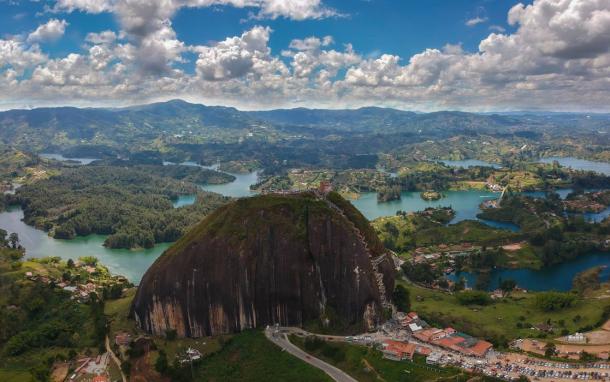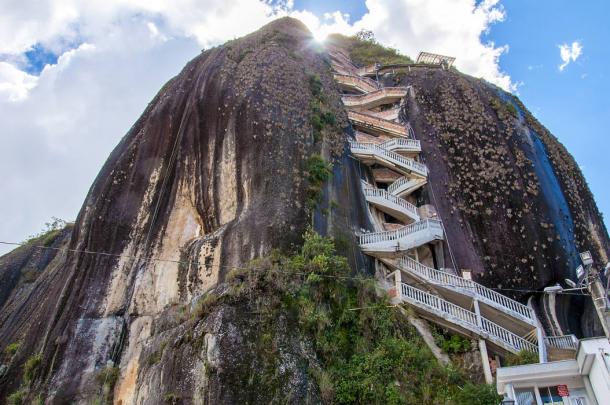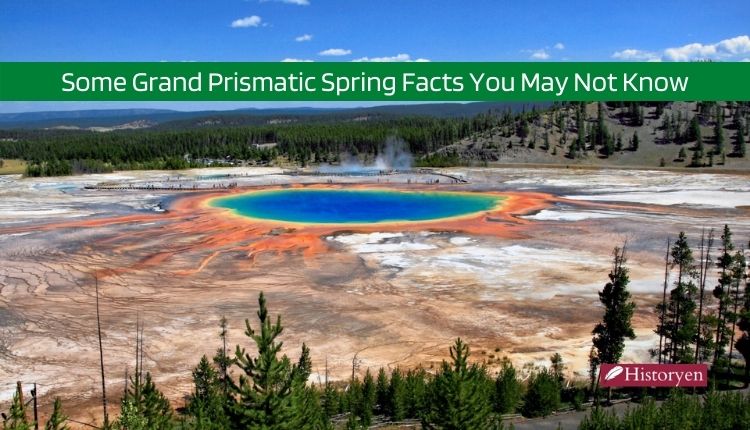In the Colombian department of Antioquia, nestled between the charming towns of Guatapé and El Peñol, an awe-inspiring monolith known as El Peñón de Guatapé commands attention. Also referred to as the Rock of Guatapé or the Rock of Peñol, depending on the speaker’s origin, this colossal structure rises from the landscape, surrounded by lush grassy plains and serene lakes, leaving both locals and visitors captivated by its allure.
A Glimpse into Ancient Mysticism

From the ancient Tahamies who inhabited the area before the Spanish conquest, a unique reverence for the stone emerges. Despite uncertainty surrounding its origin and formation, the rock’s exquisite smoothness suggests it is likely a product of the uplifted granitic pluton during the creation of Colombia’s Cordillera Occidental mountain range.
A Geological Marvel in Numbers

This monolith stands proudly at an astounding height of 656 feet (200 meters) and comprises a mineral composition of quartz, feldspar, and mica. While approximated at 10 million tons, the rock’s weight remains subject to debate. With an age of around 70 million years, the surrounding region narrates a diverse geological tale. The early Mesozoic Era submerged most of Colombia, leaving marine sedimentary deposits as remnants.
The Birth of a Mountain Range
As the Cretaceous Period arrived, roughly 145 to 66 million years ago, the Colombian Cordilleras began to emerge. The collision between the Nazca and South American Plates led to volcanic activity and uplifted terrains, birthing the Cordillera Occidental. This imposing mountain range looms close to the town of Guatapé.
Unveiling the Mysteries of Formation

During the Cordillera Occidental’s formation, ancient magma chambers surfaced, transforming into granitoid plutons after eons of cooling. Exposed over time through weathering and erosion, these rocks formed a distinctive belt along the Cordillera Occidental’s fringes. This uplifting process results in expansive smooth rock masses, often resembling artificial constructs.
A Glimpse at the Power of Nature
For instance, consider Yosemite’s Half Dome, an enormous granite structure sculpted by erosion and glaciers. In a similar vein, the Rock of Guatapé most likely originates from a larger pluton exposed to the surface. While speculation arises about an ancient civilization’s involvement, tangible evidence remains absent. Nevertheless, despite its unusual positioning and polished surface, the monolith’s natural essence prevails.
A Cultural Icon: Past and Present

The Rock of Guatapé holds profound cultural significance. The Tahamies, a South American agricultural society governed by hereditary leaders, revered the monolith. Though their exact beliefs are unknown, the awe they felt towards the rock’s divine origins endures. This sentiment is reinforced by the lack of similar structures in the vicinity.
A Journey of Discovery
In 1954, two adventurous souls, spurred by a local priest, scaled the rock using wooden planks wedged into a major fissure. They became the first modern explorers to conquer the monolith. Subsequently, stairs were constructed within a fissure, easing access to the summit. Today, a visitor center crowns the peak, establishing it as a must-visit tourist spot.
A Rock of Rivalry
This monumental treasure lies at the heart of a town rivalry. Guatapé and El Peñol contest ownership, symbolizing the boundary between these towns. El Peñol argues for possession, leading to the occasional reference as the Rock of Peñol. A painted town name debacle highlighted the feud’s intensity, showcasing only a partially completed “G” and “U”.
Bridging Nature and Imagination
Beyond its geological intrigue, the Rock of Guatapé captivates as a symbol of culture and imagination. Though geologically a mere mass of granite, its allure remains undeniable. It exemplifies how geological formations can incite the human imagination, much like celestial and zoological phenomena.



